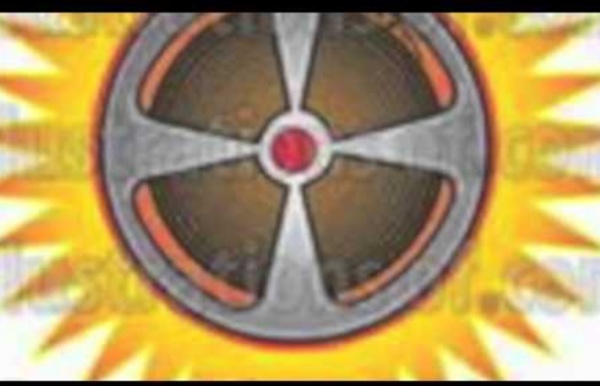



http://www.youtube.com/watch?v=QAeOHU2maOg
Related: Copyrights and Wrongs and Fair UseNetlabels : Free Music : Free Audio : Download & Streaming by Clinical Archives "CLINICAL ARCHIVES IS ABOUT EXPANDING THE DEFINITION OF MUSIC" This is independent netlabel for eclectic and illogical music. The basic directions : abstract, avant-garde, alternative, indie, intuitive improvisation, free improv, jazz, fusion, electronic jazz, free jazz, funk, jam band, live electronic, experimental, experimental pop, dark disco, contemporary, manipulation, neo-classicism, illbient, ambient, musique concrète, noise, tape music, minimalism, acousmatic music, sound...
15 Copyright Rules Every Student Should Know You might think that liberal arts students are the only ones who need to understand copyright law, but future photographers, animators, writers, and artists are actually the ones who might be suing students one day. As students rush to complete assignments, one of the last things on their minds is copyright law. The temptation to pluck resources from just about anywhere is often too great for some students, and others are simply unaware that rules and regulations protecting the use of art and content even exist. But the fact is that these rules do exist, and regardless of knowledge, students are expected to play by these rules. We’ve highlighted 15 copyright rules that are the most important to students, and also the most often ones misunderstood. Fair use This is a big one for students, and we’ll hit on more details further, but first, you must know the basics of fair use for students.
Copyright & plagiarism for students Copyright & plagiarism for students Copyright infringement Copyright infringement is when an individual, who does not possess the copyright of a work, violates one or more of six rights (reproduction, adaptation, distribution, public performance, public display, digital transmission of sound recordings) of copyright owners. There are three types of copyright infringement: innocent, standard, or willful. Fines from $750 - $250,000. Criminal prosecution is possible when something has been copied and distributed on a large scale, such as pirating music and movies on file sharing sites.
Copyright and Plagiarism After students listen to the Ice vs Bowie samples again, explain the lawsuit that followed and why Bowie/Queen was successful. Explain how plagiarism is the same kind of violation but that it can be avoided in an educational setting with citations. Distribute the handout. Download & Streaming : Moving Image Archive movies eye favorite 2 comment 0
Teaching Copyright As today's tech-savvy teens become increasingly involved with technology and the Internet for learning, work, civic engagement, and entertainment, it is vital to ensure that they understand their legal rights and responsibilities under copyright law and also how the law affects creativity and innovation. This curriculum is designed to give teachers a comprehensive set of tools to educate students about copyright while incorporating activities that exercise a variety of learning skills. Lesson topics include: the history of copyright law; the relationship between copyright and innovation; fair use and its relationship to remix culture; peer-to-peer file sharing; and the interests of the stakeholders that ultimately affect how copyright is interpreted by copyright owners, consumers, courts, lawmakers, and technology innovators. Unit Goals
University of Virginia Library Copyright and Scholarly Communication Resources University of Virginia Library Sites > Copyright and Scholarly Communication Resources > Copyright Resources > Copyright Essentials for Scholarly Work Copyright law governs many uses of scholarly and other creative works. Getting to know a few key copyright concepts will serve you well as you prepare and pursue publication of your scholarly work, whether it’s a website, a journal article, a book chapter, a thesis or dissertation. Copyright affects your work in two primary ways: how and when you can use copyrighted third-party content, and your rights and the opportunities you have to share your work as the author of your thesis or dissertation.
3-D Printers: Understanding Copyright, Fair Use, and More Libraries have been on the front lines of the digital revolution since its beginning. 3-D printing is the latest wave of this revolution, which continues to fundamentally change the way we access, process, and produce information. This technology brings digitization to the physical marketplace for the first time, by allowing people of all ages to use digital processes to create tangible items that can be used, traded, bought and sold. It promises progress across numerous industries and sectors. University of Virginia Library Copyright and Scholarly Communication Resources University of Virginia Library Sites > Copyright and Scholarly Communication Resources > Copyright Resources > Fair Use If you are reusing portions of the copyrighted work of another author or creator, your use MAY be authorized under the Fair Use provisions of U.S. Copyright Law. The Copyright Act itself gives Fair Use examples including criticism, comment, news reporting, teaching, and scholarship.
Copyright: Will We Always Be Behind the Times? I dusted off my copyright presentation the other day, getting ready to talk to a journalism class full of juniors. The task the teacher and I were hoping to accomplish was to help the students better understand copyright and the use of digital images in their online blog magazine publications. As I prepared, just for fun, I pulled the books on copyright that I have as resources for staff in our professional collection. I am embarrassed to tell you that the first thing I found was NEA’s Copyright Primer for Librarians and Educators from 1995! I then proudly pulled out Copyright Clarity by Renee Hobbs only to discover that it is already almost six years old! This jarred me into thinking, once again, how rapidly digital creation tools evolve and how, just as rapidly, we need to revisit how we think about copyright.
This video explains copyright and fair use for student projects and is one that can be shared in the classroom. by annambaker Feb 5